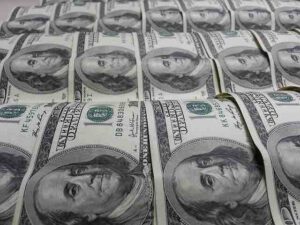The relationship between financial markets and central banks is a complex and delicate one. It is a dance that has been going on for decades, with each partner trying to lead the other in a particular direction. This dance is one that has far-reaching implications for the global economy, and it is one that requires both partners to work in harmony if they are to achieve their goals.
At the heart of this dance is the question of interest rates. Central banks are responsible for setting interest rates, and financial markets react to these decisions. When interest rates are lowered, it becomes cheaper for businesses and individuals to borrow money, which can stimulate economic growth. When interest rates are raised, it can have the opposite effect, slowing down the economy and potentially leading to inflation.
The challenge for central banks is to find the right balance between keeping interest rates low enough to stimulate growth, but not so low that it leads to inflation. This is no easy task, and it requires central banks to be constantly monitoring economic data and adjusting interest rates accordingly.
Financial markets, on the other hand, are constantly trying to anticipate what central banks will do next. Traders and investors analyze economic data, listen to speeches from central bank officials, and try to read between the lines to determine what the next move will be. This can create a feedback loop, where financial markets influence central bank decisions, and central bank decisions influence financial markets.
One example of this dance can be seen in the aftermath of the 2008 financial crisis. Central banks around the world lowered interest rates to stimulate growth, and many also implemented quantitative easing programs, which involved buying large amounts of government bonds to inject liquidity into the financial system. These actions helped to prevent a global economic meltdown, but they also had unintended consequences.
One of these consequences was that it led to a search for yield. With interest rates so low, investors began looking for higher returns elsewhere. This led to a boom in riskier investments, such as emerging market debt, high-yield bonds, and cryptocurrencies. It also led to a surge in stock prices, as investors sought out companies with high growth potential.
The problem with this search for yield is that it can lead to bubbles and financial instability. If investors are too focused on short-term gains, they may overlook the risks and fail to see the bigger picture. This can create a situation where asset prices become detached from their underlying fundamentals, leading to a market correction or even a crash.
Central banks are aware of these risks, and they are constantly trying to balance the need for growth with the need for stability. They are also aware that their decisions can have global implications. For example, when the US Federal Reserve raises interest rates, it can lead to a strengthening of the US dollar, which can have a negative impact on emerging market economies that have borrowed heavily in US dollars.
In conclusion, the dance between financial markets and central banks is a complex and dynamic one. It requires both partners to work in harmony if they are to achieve their goals of promoting economic growth while maintaining financial stability. This dance will continue for as long as there are financial markets and central banks, and it will continue to have far-reaching implications for the global economy.










